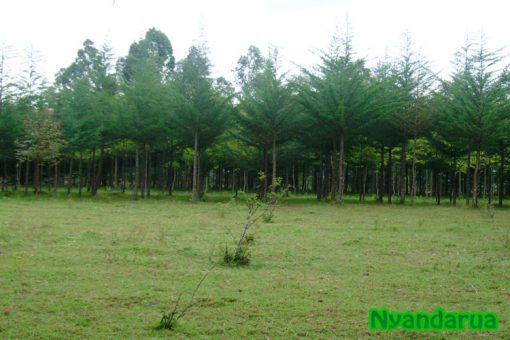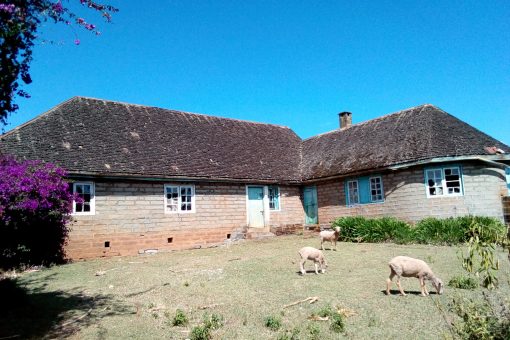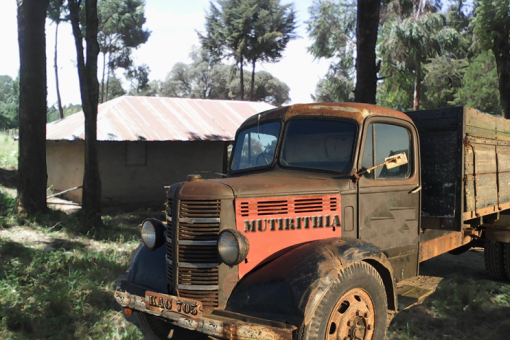Johana was a short man who worked and lived in some wooden houses at the backside of town, near the railway tracks. People from our Settlement Scheme sometimes approached town from the backside, because it was shorter than following the rural “highway” that passed infront of the Catholic Church, down the slaughter house (githinjiro) and up that final hill that took you outside St. Joseph’s Primary School main entrance, and into the heart of OlKalou town. The shorter route branched off at the gate of the Catholic Church. On the opposite side of the gate, there was a path that cut through the County Council Cemetery (kaburi) leading to the railway tracks. We walked along the railway tracks, and branched off at the St. Joseph’s teachers quarters, some 5 houses that were built in a zigzag design, the place I mentioned previously where my mother and I visited Mr. Kibunja and his wife Njambi the Police Officer, to see their new born baby.
That path led us through some residential wooden houses with raw sewage flowing freely in small streams. It was nasty but that was the shortcut into town, a place we got in and out of in a hurry following our parents instructions. “Tauni ti gwagutindwo” translation: Town is not a place to spend your day.
Anyhow, it was through those residential houses that we always found the short jolly old man named Johana who looked exceptionally clean in his white Khaki shorts and a cricket style sleeveless sweater. He was often sitting in a chair with a bicycle wheel rotating in front of him. On a tight string that was rotated by the bicycle wheel, Johana fed wool onto the string, spreading it out evenly as it moved along in front of him, a process that churned out beautiful white yarn at the end of this one man production line. The wool was sheared from the Ruguru sheep once a year, providing Johana with plenty of raw material that farmers had no use for.
My details above may not be accurate because, truth be told, as teenagers, we breezed through that side of town, passing Johana and his wool operation without paying much attention. We had no real interest in whatever the old man was doing, curiosity maybe.
Today, I would be honored to sit with Johana and watch how he made yarn from unprocessed wool. I had seen a few of our schoolmates with sweaters knitted by their mothers with that homemade yarn bought from Johana. Back then, we made fun of such kids because we viewed anything locally made as “uncool”. As I recall, the sweaters made with Johana’s homemade thick yarn were warm and fluffy, exactly what was needed to beat the cold temperatures of OlKalou, unlike our thin single knit mass produced sweaters from School Outfitters in Nairobi.
I wish I could lay my hands on Johana’s yarn today, I could knit and crotchet “winter” wear for my entire family, and I am sure people would wonder where we bought such beautiful unique sweaters. I did not know Johana, his family or where he was from; but I hope somebody from his family learnt the yarn making skill from their creative and talented father, carrying on that tradition wherever they are today. It is a skill worth having and one can start a cottage industry based on it.



